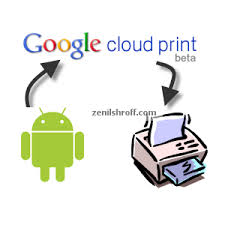
Here’s a question for you: When you search on Google, are you also signed
in
to Google? If so, there’s a good chance Google is saving a so-called
“Web History” of each and every one of your searches, stretching back
for months or even years.
I checked my own Google account and found that Google has saved
nearly 30,000 of my prior searches, plus a record of the links I clicked
based on those search results, stretching as far back as 2006.

Your
Web History contains a comprehensive list or all your Google searches,
potentially stretching back years—and yes, you can delete some or all of
your searches.
Believe it or not, I can tell you that on December 29, 2007 at
exactly 4:51 p.m., I did a Google search on “new years smith street
brooklyn”—probably because I was hunting for a good place to spend New
Year’s Eve.
In addition to the enormous list of searches, your Web History also
boasts a color-coded calendar that shows which days of the week you’re
doing the most searching.
And since your Google Web History is (of course) itself searchable,
it makes for a handy (if, perhaps, a bit unsettling) way to find an
interesting web page that’s since slipped your mind.
Now, don’t like the idea of Google saving your searches? Well, good news and bad news.
Good news first: not only can you stop Google from saving your
searches in your Web History, you can also delete your Web History
selectively or entirely.
The bad news? Zapping your Google web history doesn’t wipe out every last trace of your past Google searches.
Indeed, Google (like many other search engines) may
share the search and usage data stored on its servers with various “partners,” advertisers, or even law enforcement. Food for thought, particularly in light of the recent
PRISM controversy.

You
can stop Google from saving searches in your Web History, but that
doesn’t mean Google isn’t still keeping records of your search activity.
So, ready to check out your Web History? Let’s get started…
- Sign in
to your Google account, click your user icon in the top-right corner of
the page, click Account, then scroll all the way down and click the
“Manage your web history” link. You can also just click this link: history.google.com.
- You should now be looking at your personal Web History as Google
sees it—interesting stuff, actually. You can browse your history using
the navigation links to the left (anything from “Web” and “Images” to
“Shopping” and “Maps), or by clicking the calendar on the right. The
days on the calendar are color-coded based on your search activity, with
the darker-blue dates representing the days you searched the most
often.
- See anything in your Web History that you’d like to delete? If so,
click the checkbox next to the item and click the “Remove items” button.
- Want to delete everything in your Web History? Click the gear icon
in the top-right corner of the page, select Settings, then click the
“delete all” link.
- Want Google to stop tracking your searches in your Web History? Go
back to the Settings page, then click the “Turn off” button. (Yes, you
can always come back later and turn your web history back on.)
Source http://heresthethingblog.com
How to clear the saved searches in your “Web History”
















